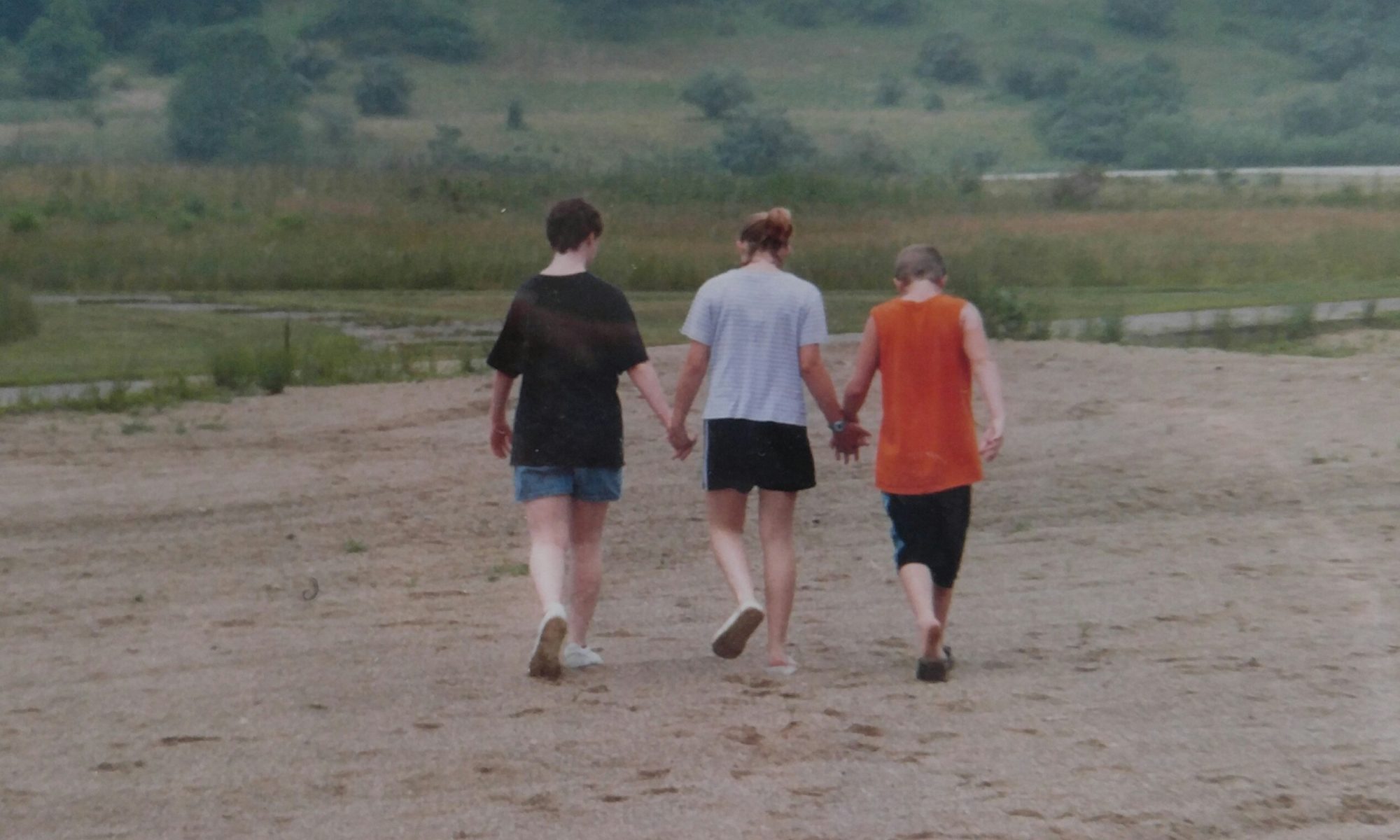
Honestly, the sense of touch is messed up with both Casey and Rob. They are both a mixture of hyper-sensitive and hypo- sensitive when it comes to their skin.
Rob will dig at insect bites until they are bleeding because he doesn’t feel the pain. He doesn’t notice cuts or bruises. He had a broken collar bone and it took hours for him to slow down enough that I knew something was wrong.
I have to turn his shower water on because he won’t notice how hot it is and will get burned. He burned his finger badly as a teen because he laid his hand against a hot pan and didn’t notice. He doesn’t notice sun burn or the sting of a bee. (However, he has had bad reactions to insect stings and ended up in ER, so he is afraid of them.)
He needs the weight of many blankets to be able to sleep as he can’t feel the pressure of just one. He loves standing in pouring water for the deep pressure it provides.
But – his sense of touch is hyper in some areas, as certain food textures will make him gag. He can’t wear certain fabrics as he will break out in a rash. His body temp does not regulate well, as he can overheat but not feel cold.
He enjoys his skin being “brushed” (a light tickle that I never thought he would notice). He also likes being lightly tickled on his arms and back, but he also enjoys tight bear hugs. It’s always a question whether he needs more or less of something.
Casey gets hot and cold easily. She can adjust her bath water so it’s not too hot. She will jerk away from hot things and she’ll wear almost any fabric. Sunburn doesn’t bother her and she rarely picks at insect bites.
But – she doesn’t feel pain. She sliced her leg on a mattress spring (it was nearly new – I still don’t know how it happened!) and the only way I knew was she was in the bathroom forever and I went to check only to find her patiently putting bandaids on her leg. It took 16 staples to close the gash.
She is terrified of needles because they hurt, but can stub her toe and not notice. She doesn’t like water pouring on her and food textures are not a problem. She is afraid of bees, but I think it’s because Rob and Mandy don’t like them, so she just follows their lead. 😊
The sense of touch can affect your child in so many ways. Things you never thought of – the seam in their sock, the tags in their clothes, how hard their chair is, whether they can sleep at night or even whether they can concentrate in school. After all, imagine trying to concentrate when all you can focus on is how tight your shoe feels.
It can also be dangerous when a person has hypo-sensitive touch. Just like Rob’s collar bone and Casey’s cut leg – injuries can be severe and they won’t notice. And when an injury does occur, you have to be really vigilant about how it’s healing. They aren’t able to tell you if it starts hurting more or is getting infected. It’s another thing to consider if your child pulls away from you and doesn’t like hugs. It’s hard not to take that personally, but in reality, it’s probably their sense of touch.
If your child is having behaviors, definitely consider everything they wear – what they are sitting on – how they hold pencils. Their behaviors might be as simple as a tag in their shirt rubbing their neck. (Tagless clothes are amazing!) When you have a child like Casey or Rob, who are both hyper and hypo sensitive, it’s difficult to know what is causing the behavior. Like everything else with autism, it can be tricky to discover the root cause. The best way is to write down everything your child is wearing each day and watch for a pattern. It’s a pain to do, but if you can discover the issue, your child will be so much happier! (and so will you! 🙂 )



